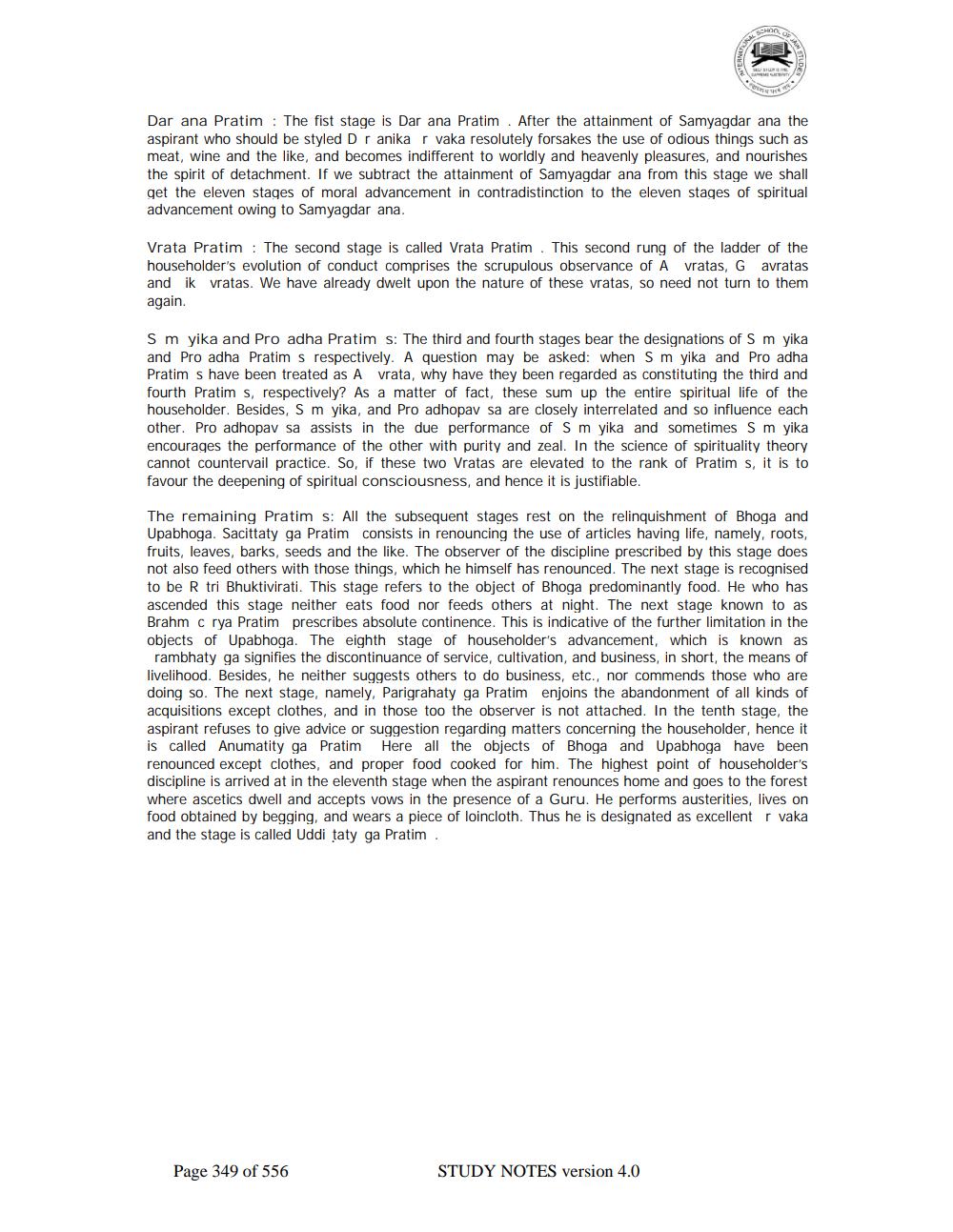________________
Dar ana Pratim : The fist stage is Dar ana Pratim. After the attainment of Samyagdar ana the aspirant who should be styled Dr anika r vaka resolutely forsakes the use of odious things such as meat, wine and the like, and becomes indifferent to worldly and heavenly pleasures, and nourishes the spirit of detachment. If we subtract the attainment of Samyagdar ana from this stage we shall get the eleven stages of moral advancement in contradistinction to the eleven stages of spiritual advancement owing to Samyagdar ana.
Vrata Pratim : The second stage is called Vrata Pratim. This second rung of the ladder of the householder's evolution of conduct comprises the scrupulous observance of A vratas, G avratas and ik vratas. We have already dwelt upon the nature of these vratas, so need not turn to them again.
Sm yika and Pro adha Pratim s: The third and fourth stages bear the designations of S m yika and Pro adha Pratim s respectively. A question may be asked: when Sm yika and Pro adha Pratim s have been treated as A vrata, why have they been regarded as constituting the third and fourth Pratim s, respectively? As a matter of fact, these sum up the entire spiritual life of the householder. Besides, Sm yika, and Pro adhopav sa are closely interrelated and so influence each other. Pro adhopav sa assists in the due performance of Sm yika and sometimes Sm yika encourages the performance of the other with purity and zeal. In the science of spirituality theory cannot countervail practice. So, if these two Vratas are elevated to the rank of Pratim s, it is to favour the deepening of spiritual consciousness, and hence it is justifiable.
The remaining Pratim s: All the subsequent stages rest on the relinquishment of Bhoga and Upabhoga. Sacittaty ga Pratim consists in renouncing the use of articles having life, namely, roots, fruits, leaves, barks, seeds and the like. The observer of the discipline prescribed by this stage does not also feed others with those things, which he himself has renounced. The next stage is recognised to be R tri Bhuktivirati. This stage refers to the object of Bhoga predominantly food. He who has ascended this stage neither eats food nor feeds others at night. The next stage known to as Brahm c rya Pratim prescribes absolute continence. This is indicative of the further limitation in the objects of Upabhoga. The eighth stage of householder's advancement, which is known as
rambhaty ga signifies the discontinuance of service, cultivation, and business, in short, the means of livelihood. Besides, he neither suggests others to do business, etc., nor commends those who are doing so. The next stage, namely, Parigrahaty ga Pratim enjoins the abandonment of all kinds of acquisitions except clothes, and in those too the observer is not attached. In the tenth stage, the aspirant refuses to give advice or suggestion regarding matters concerning the householder, hence it is called Anumatity ga Pratim Here all the objects of Bhoga and Upabhoga have been renounced except clothes, and proper food cooked for him. The highest point of householder's discipline is arrived at in the eleventh stage when the aspirant renounces home and goes to the forest where ascetics dwell and accepts vows in the presence of a Guru. He performs austerities, lives on food obtained by begging, and wears a piece of loincloth. Thus he is designated as excellent r vaka and the stage is called Uddi taty ga Pratim
Page 349 of 556
STUDY NOTES version 4.0




